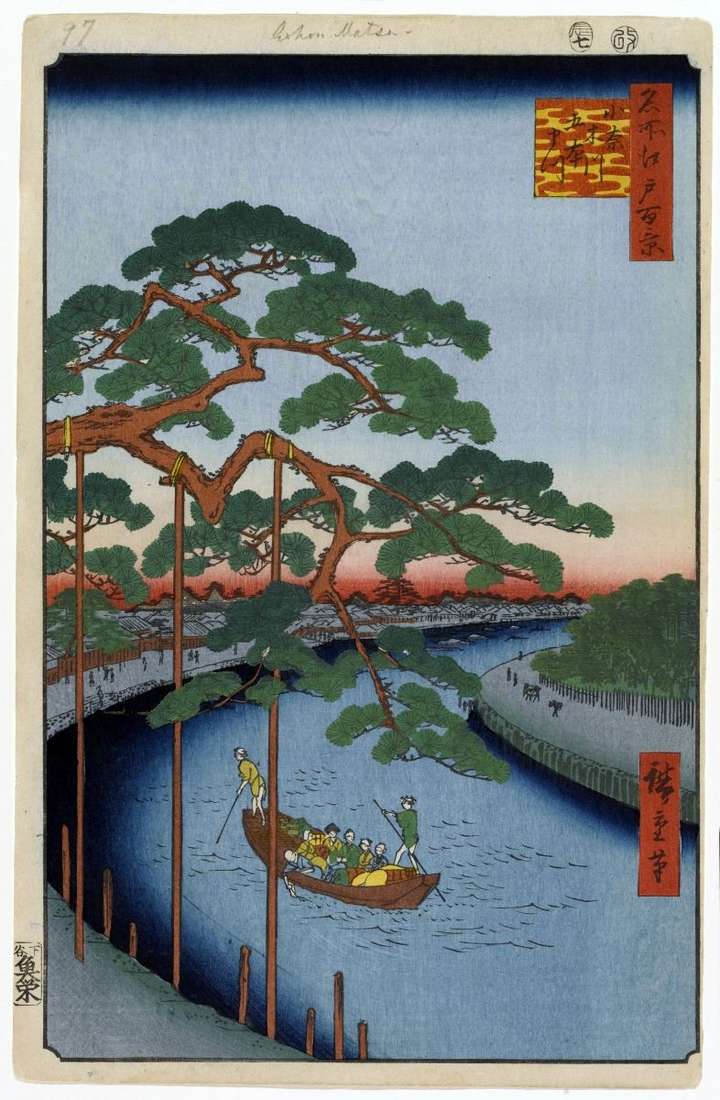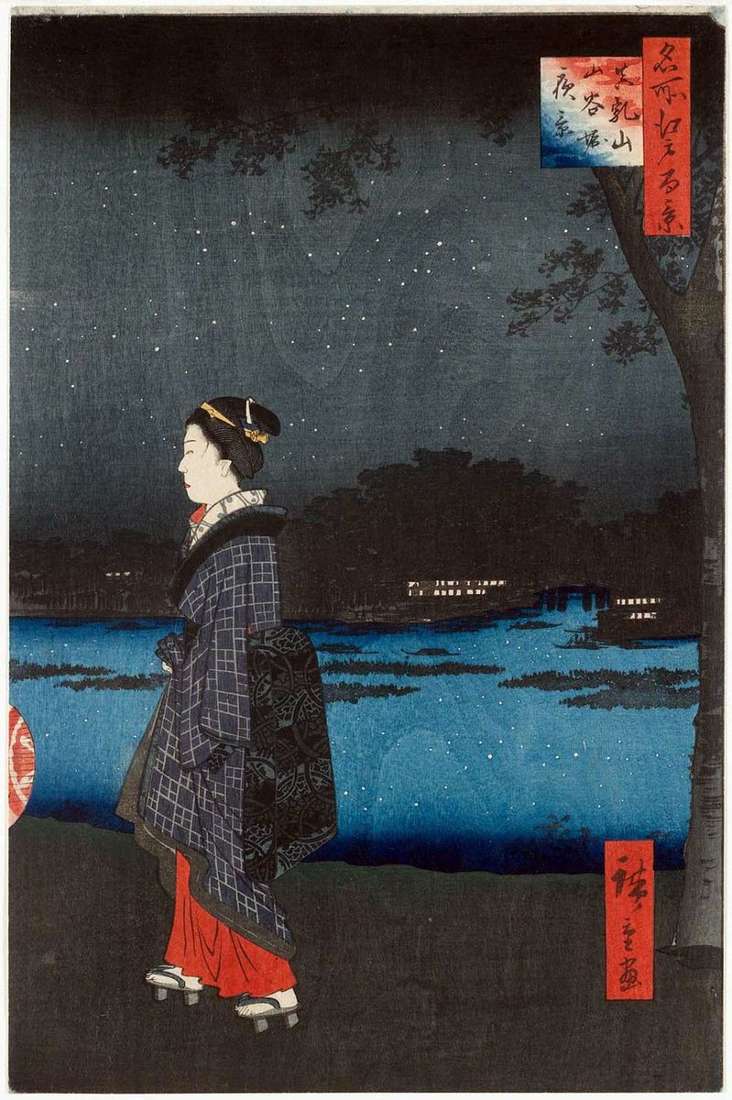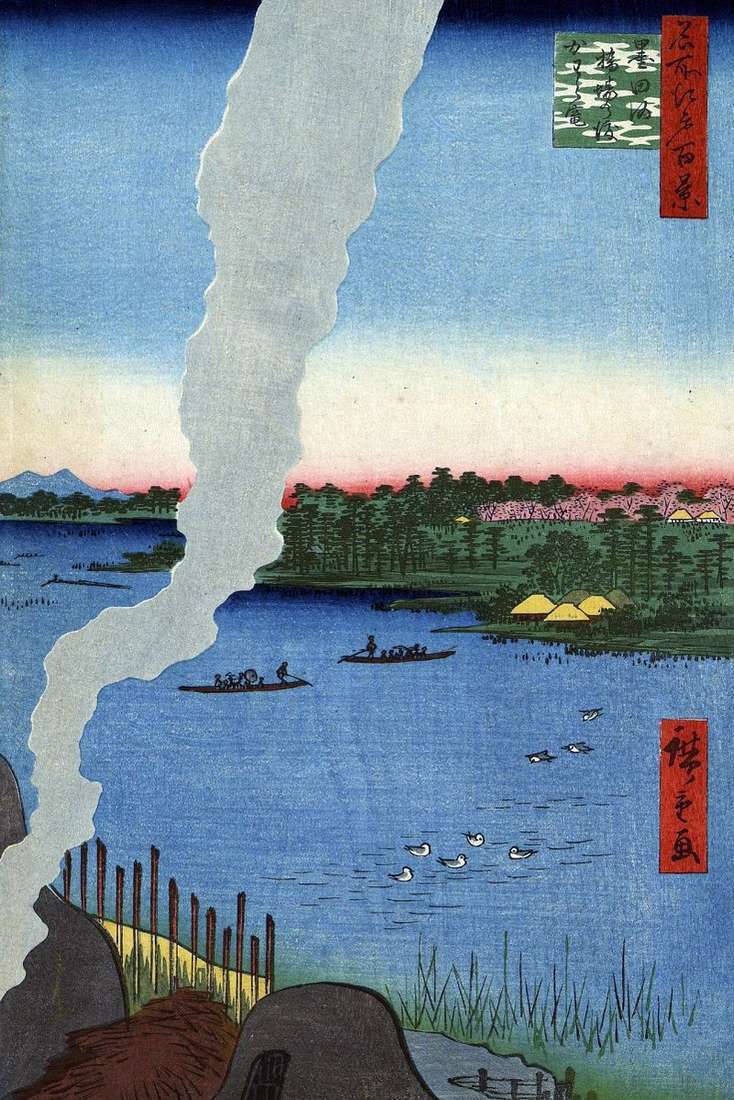
The terrain depicted by Hiroshige was adjacent to the eastern bank of the Sumidagawa River, which flowed into the Edovan Gulf. In the north of the Khondze district, there were shoals everywhere, overgrown with reeds, here, four kilometers from the center of Edo, was the village of Kou-me-mura. The area was known for its canal Hikifunagava, the view of which opens in engraving.
At the beginning of the Edo period, it supplied water to the areas of Hondze and Fukugawa, but later it was used for freight traffic. It was shallow and narrow, so the boats were pulled by rope by people who could be called barge haulers. In this engraving, the artist does not show the boats themselves and the people pulling them. He does not depict plums, which gave the name of the village. The trees in the foreground on the left are the Japanese alder. To the right of the bridge, under them children play with puppies. Further, behind the trees in the foreground is the Hatidammebashi Bridge, which is crossed by two women in hats, followed by the bridges of Kosinbashi and Cityhimbashi.
On both sides of the channel yellow rice fields turn yellow. A sharp dark blue band of bokasi passes in the late engraving along the very center of the canal of Hikifunagawa. The overall color tone of the engraving changes. The sky acquires a pink color, passing at the top edge of the leaf in red.
 Pine Goyhonmatsu on the Onagigawa Canal by Utagawa Hiroshige
Pine Goyhonmatsu on the Onagigawa Canal by Utagawa Hiroshige View of the Kinryudzan Monastery and the Azumabashi Bridge by Utagawa Hiroshige
View of the Kinryudzan Monastery and the Azumabashi Bridge by Utagawa Hiroshige Tsukudajima Island from the Eitaibashi Bridge by Utagawa Hiroshige
Tsukudajima Island from the Eitaibashi Bridge by Utagawa Hiroshige The Kebasi Bridge and the Takegashi Embankment by Utagawa Hiroshige
The Kebasi Bridge and the Takegashi Embankment by Utagawa Hiroshige Night view of Matsutiyama and Canal of Sanyavori by Utagawa Hiroshige
Night view of Matsutiyama and Canal of Sanyavori by Utagawa Hiroshige Furnaces for roasting at the crossing of Hasiba no Watasi on the Sumidagawa River by Utagawa Hiroshige
Furnaces for roasting at the crossing of Hasiba no Watasi on the Sumidagawa River by Utagawa Hiroshige The Asakusagawa River, the Miyatogawa River, the Okavaabata Embankment by Utagawa Hiroshige
The Asakusagawa River, the Miyatogawa River, the Okavaabata Embankment by Utagawa Hiroshige Rainfall over the bridge of Ohashi, Atake by Utagawa Hiroshige
Rainfall over the bridge of Ohashi, Atake by Utagawa Hiroshige